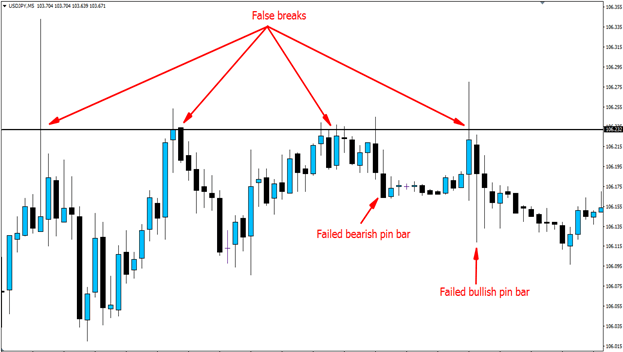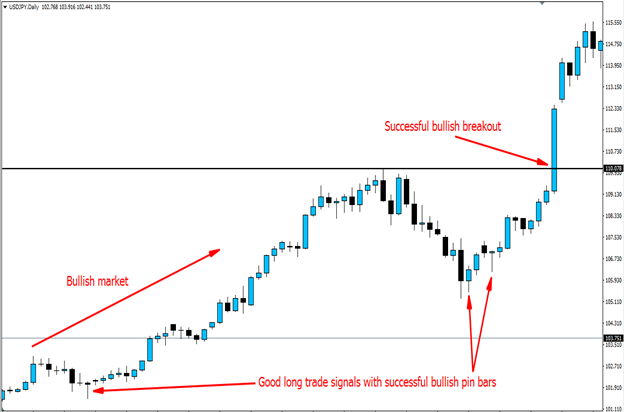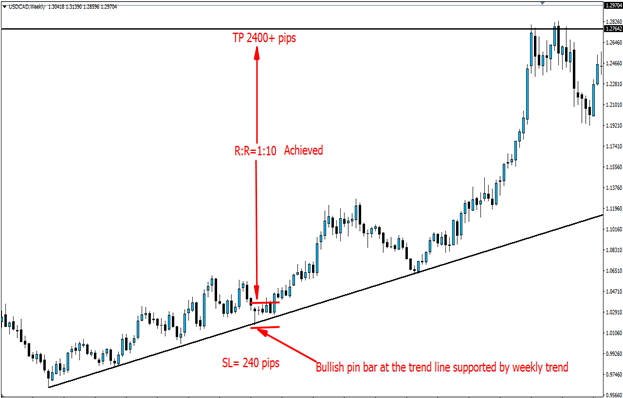The forex market has different kinds of traders. Primarily, we can classify them as short-term forex traders and long-term forex traders.
Usually, short-term traders use shorter time frame charts for trading and hold their positions for a shorter period of time.
On the other hand, long-term forex traders watch for trading signals based on longer time frame charts and hold their positions for an extended period of time.
The price volatility in smaller time frames, such as 1 minute or 30 minute charts, is normally very high and provide more trading signals than larger time frame charts.
However, the problem with such signals is that you may often encounter false signals and bad entries, which can result in extensive damage to your trading account. Such a condition is normally considered as market noise.
If you are a short-term trader and keep sitting all day long in front of your computer looking for trade opportunities in such a market noise, then you are on the way to become a trade maniac.
Consequently, you will be facing troubles trading bad signals, which will destroy your confidence in trading currencies.

On the USD/JPY 5 minute chart above, we can see that price made a number of false breaks at the upper resistance.
During such situations, traders may be tempted to go long, assuming a bullish breakout has occurred.
We can also see several bullish pin bars, which eventually failed to support the upward move.
If you trade on such short-term charts, the low market momentum and choppy conditions may also increase your losses.
Now, let’s look at the USD/JPY chart again, but this time using the daily time frame.

Predominantly, we can feel the quieter trading environment that a daily chart provides—and, it lacks the high volatility noise.
The initial bullish trend of the market was well supported by several bullish pin bars with successful long trade entries.
There was also a successful bullish breakout in the trend direction.
Furthermore, the chart offers fewer trading signals, which will save you from spending the whole day with your computer, encountering overtrading frustrations, and incurring frequent trading losses.
You’ll also get enough time out of the market and focus on other things that matter in life.
To put plainly, long-term traders enjoy longer length of market momentum than short-term traders.
Consequently, they are likely to profit from better risk to reward ratio (R:R) than short-term traders.
If you are trading with weekly or monthly time frame charts, it means that you have greater possibility of earning higher reward against the risk you are taking for each entry.

On the USD/CAD weekly chart above, the initial trend was bullish. And, we found a bullish pin bar right at the trend line, signifying an opportunity to enter a buy order and sail with the bullish trend direction.
If you enter a long order at the nose-break of the pin bar, you’ll need to set your stop loss limit below the tail of the pin bar and the trend line.
In that case, your stop loss amount will be 240 pips. Amazingly, this trade worked well as price sailed up to the weekly resistance level, gaining more than 2400 pips, and achieving 1:10 risk to reward ratio!
The above example illustrates that one single good trade entry could be much better than placing 10 trades per day.
If you shift from a weekly chart to monthly chart, you’ll find larger momentum and the opportunity to get better R: R ratio than in the weekly chart.
Most professional traders have discovered this secret and they constantly rely on long-term trading.
To be a successful long-term trader and to profit from such large momentum, it is important you set a wide range of stop loss.
Some traders consider long-term trading style to be unsuitable for them because of their small trading accounts.
If you have a small trading account, you should not be exposing large positions to the market.
With a small trading account, you just need to practice good risk management and still manage to profit from long term trading.
Initially, you may experience a slow start, but with dedication and perseverance, you’ll get steady trading results.
Conclusion
To this end, you may have already understood the dangers of short-term forex trading and the benefits of long-term forex trading.
If you only focus on your account size and quick profits, then you may be derailed from the path of becoming a successful long-term trader.
We recommend you stick to your trading plan, practice proper risk management, be disciplined, and aim for higher rewards against your trading risks. This could be the ideal way of participating successfully in the world’s largest financial market.
How do you find long-term forex trading as compared to short-term trading?
Please let us know your thoughts in the comment section below.

In short, since I started long term trade I have encountered more gain than usual
Please what is community help in forex,is it legal
Yes, forex trading is a legal type of business. Nevertheless, you should look at the laws of your country for any specific guidelines.
The risk to reward ratio is fantastic, though I don’t like the idea of a too wide range of stop loss
Why, Felix?